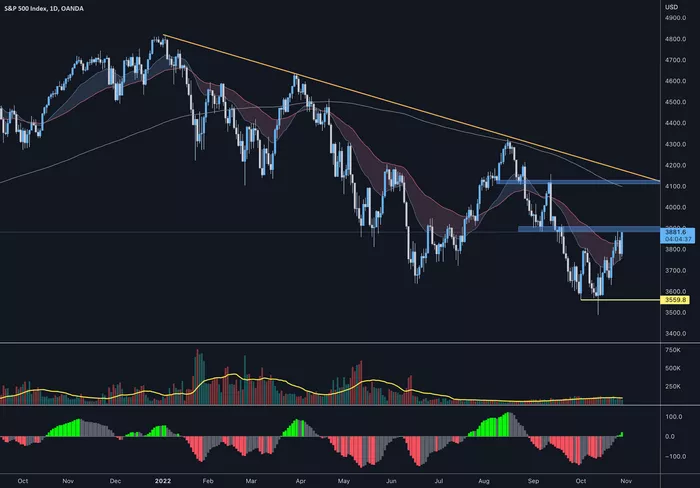The stock market is a dynamic environment that operates on specific hours. However, with pre-market trading, investors can access the market before the official market opens. Robinhood, one of the most popular commission-free trading platforms, provides users with access to pre-market trading, allowing them to place trades before the opening bell. This article will guide you through the process of buying stocks in the pre-market on Robinhood, explaining what pre-market trading is, the steps involved, and key considerations to keep in mind.
What is Pre-Market Trading?
Pre-market trading refers to the period before the regular market session starts, typically between 4:00 AM and 9:30 AM Eastern Time (ET). During this time, investors can buy and sell stocks, but the trading volume is typically lower, and the market can be more volatile. Pre-market trading allows investors to react to news or events that occur outside of regular market hours, which can have an impact on stock prices.
On Robinhood, pre-market trading is available for users, but it’s important to note that it differs from regular market hours in terms of execution speed, liquidity, and available stocks.
Why Trade in the Pre-Market?
There are several reasons why investors may choose to engage in pre-market trading:
1. Reacting to News
One of the primary reasons for pre-market trading is the ability to react to breaking news. Earnings reports, government announcements, or geopolitical events often occur before the market opens. Investors can buy or sell stocks based on this news in an attempt to capitalize on price movements.
2. Capturing Price Movements
Pre-market trading can present opportunities to capture price movements before the official market opens. If a stock moves significantly during the pre-market, investors may try to capitalize on the momentum once regular trading begins.
3. Less Competition
Since fewer traders are active during pre-market hours, there may be less competition for stocks, which can provide opportunities to buy stocks at favorable prices before the market fully opens.
However, it’s important to understand that pre-market trading carries a unique set of challenges and risks, including lower liquidity and higher volatility.
Steps to Buy Stocks Pre-Market on Robinhood
Buying stocks during the pre-market session on Robinhood is simple. Below is a step-by-step guide on how to place your trades.
1. Create and Fund Your Robinhood Account
Before you can start buying stocks, ensure that you have an active Robinhood account. If you don’t have one:
Sign up on the Robinhood website or through the mobile app.
Complete identity verification and link your bank account.
Deposit funds into your Robinhood account. You can fund your account via bank transfer, wire transfer, or instant deposit.
Once your account is funded, you are ready to begin trading.
2. Enable Pre-Market Trading on Robinhood
Not all Robinhood accounts automatically have pre-market trading enabled. Here’s how to ensure that you have access:
Open your Robinhood app.
Go to the Settings menu, typically found in the account section of the app.
Under the Trading section, ensure that the pre-market trading option is enabled.
This will allow you to access the extended hours trading feature, which includes both pre-market and after-market sessions.
3. Check Pre-Market Trading Hours
Pre-market trading typically starts at 4:00 AM ET and runs until the regular market opens at 9:30 AM ET. However, be sure to check Robinhood’s official trading hours, as they might vary slightly or be affected by holidays or special market conditions.
4. Find Stocks Available for Pre-Market Trading
Not all stocks are eligible for pre-market trading on Robinhood. The platform only allows pre-market trading for stocks listed on major exchanges like the NYSE and NASDAQ. Additionally, the liquidity of a stock can affect its availability for pre-market trading.
To check if a stock is available for pre-market trading:
Search for the stock on Robinhood using the search bar.
Check the trading times listed for the stock. If the stock is eligible for pre-market trading, Robinhood will display the available hours.
Robinhood will also show the price and any significant price movements during pre-market hours for that stock.
5. Place a Pre-Market Order
Once you’ve selected the stock you want to trade, follow these steps:
Go to the stock’s page on the Robinhood app.
Tap Buy (for a long position) or Sell (if you’re looking to close a position).
Enter the number of shares you want to buy or sell.
Select the Order Type. Pre-market orders are typically limited orders, meaning you specify the price at which you want to buy or sell. Market orders may not be executed during pre-market hours due to limited liquidity.
Choose Pre-Market as the order type. Robinhood will execute the order during the pre-market trading session.
Submit your order. You will receive a notification once the order has been completed, assuming the stock reaches your limit price.
6. Monitor Your Orders
Once you’ve placed your pre-market order, you can monitor the status of your order on the Robinhood app. You will be notified if the order was filled, partially filled, or canceled. Since liquidity can be low during pre-market hours, there’s no guarantee that your order will be executed immediately.
Key Considerations When Trading Pre-Market on Robinhood
While pre-market trading can be an excellent way to capitalize on early price movements, it’s important to consider several key factors before diving into this activity:
1. Lower Liquidity
During pre-market hours, the number of buyers and sellers in the market is significantly reduced. This can make it more difficult to execute trades at the desired price. Because of the lower liquidity, the price may fluctuate more than during regular trading hours, which can lead to larger spreads (the difference between the bid and ask price).
2. Higher Volatility
Pre-market trading is often more volatile than regular trading hours. Stock prices may change rapidly due to news events, earnings reports, or unexpected market factors. While this volatility can present opportunities for profits, it also increases the risk of large losses.
3. Limited Order Types
Robinhood typically only allows limit orders during pre-market trading. This means that you must specify the price at which you are willing to buy or sell a stock. Limit orders are less flexible than market orders, as they may not be filled if the stock does not reach your specified price.
4. Market Sentiment and News Events
Pre-market trading is heavily influenced by overnight news events. Companies that report earnings before market open or other significant announcements may experience large price swings. Be sure to stay updated on any news or events that may affect the stocks you are watching.
5. Possible Delays in Execution
Due to the lower volume of trades in pre-market, there can sometimes be delays in order execution. While Robinhood strives to provide a seamless trading experience, it’s important to recognize that trades in pre-market hours may not be filled as quickly as they would be during regular trading hours.
How to Mitigate Risk When Trading Pre-Market on Robinhood
Pre-market trading can be profitable, but it also comes with higher risk. Here are some strategies to help mitigate risk when trading pre-market:
1. Set Realistic Expectations
Pre-market trading can be volatile, and the price swings may be larger than during regular hours. Be sure to set realistic expectations and avoid chasing after price movements that seem too good to be true.
2. Use Limit Orders
Since Robinhood doesn’t allow market orders in pre-market trading, always use limit orders to control the price at which you are willing to buy or sell. This helps reduce the risk of overpaying for a stock or selling at a low price due to sudden price fluctuations.
3. Stay Informed
Pre-market trading is heavily influenced by news and earnings reports. Make sure to keep an eye on news and developments related to the stocks you plan to trade. Subscribing to financial news outlets and using apps like Robinhood to stay informed is essential.
4. Avoid Overtrading
Pre-market trading can be tempting due to the perceived opportunity for high returns. However, be cautious about overtrading, as the risks of loss can be higher during these hours. Stick to a solid strategy and avoid impulsive trades.
Conclusion
Buying stocks in the pre-market on Robinhood is an exciting opportunity for traders who want to react to news and capitalize on price movements before the official market session begins. With the right tools and a disciplined approach, pre-market trading can complement a well-rounded investment strategy. However, the risks involved, such as low liquidity and higher volatility, should not be overlooked.
By understanding the mechanics of pre-market trading and using strategies like setting limit orders and staying informed, you can increase your chances of success while managing risk. Always keep in mind that the pre-market session is not suitable for all traders, and it is important to practice caution before diving in.
Related topics:

























